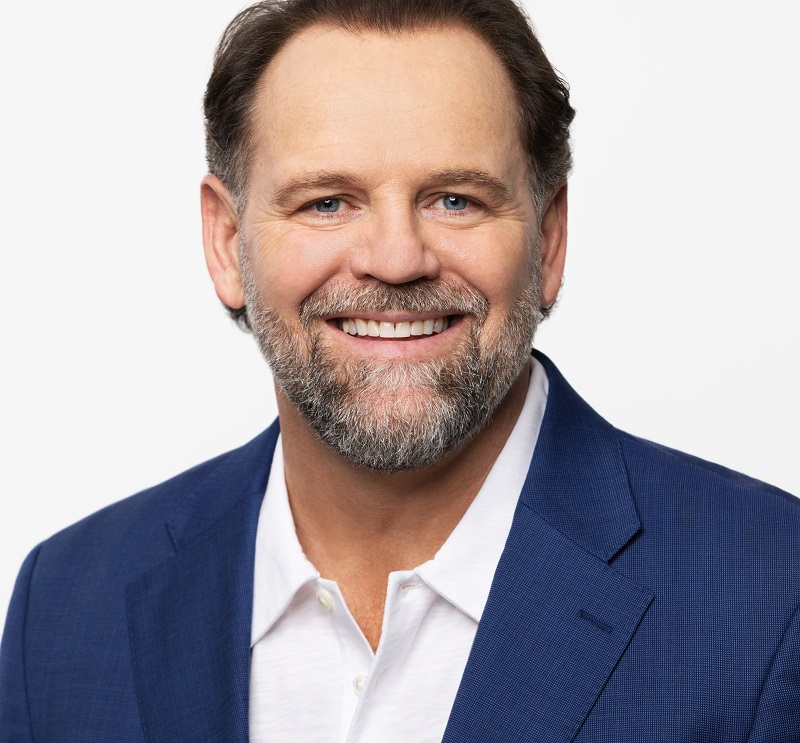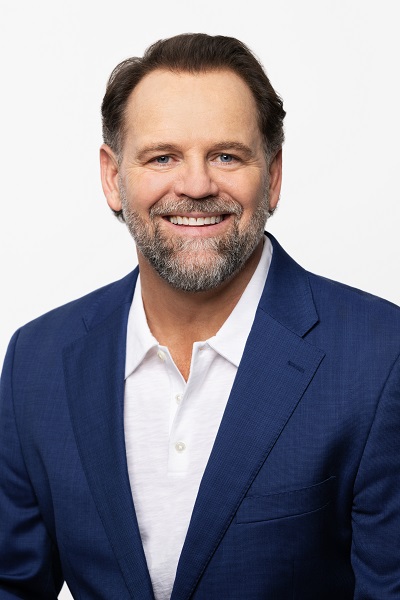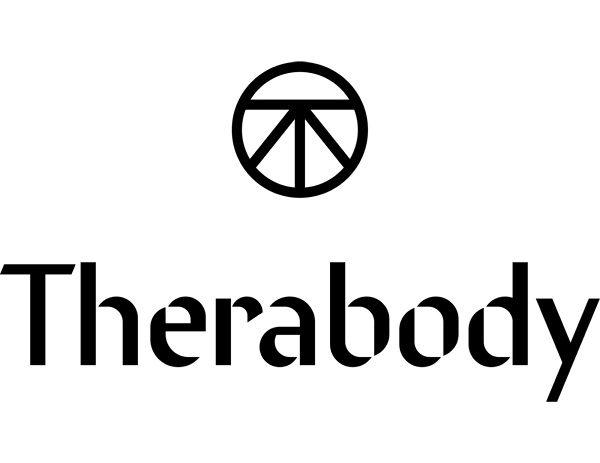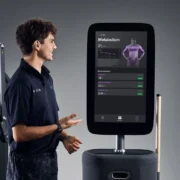CEO Corner: Therabody Founder Dr. Jason Wersland Used His Own Pain To Fulfill The Dreams of His Youth

Some believe pain is only a construct of the mind and that’s especially true for Therabody founder Dr. Jason Wersland. The professional chiropractor, who fashioned the first Theragun device model in 2008, talks to Athletech News for our CEO Corner series about his life’s mission to help make others feel better, naturally, using both the power of his mind and hands.
For some, especially his employees and patients, Dr. Jason Wersland is simply known as Dr. J. But the Therabody Founder and Chief Wellness Officer’s career journey thus far has been anything but simple. As the oldest of seven, Dr. Wersland grew up on a farm and at a young age learned how to become self-sufficient, particularly with his hands.
As time went on, so did many destined events throughout Dr. Wersland’s youth, including having a neighbor who was a chiropractor for the Utah Jazz. At this moment Dr. Wersland knew “he wanted to do that,” “that” being a chiropractor himself. By the age of 17, he tells Athletech News, he was certain his life’s calling was that of chiropractic medicine. While he started his own chiropractic practice in 2006, it was a motorcycle accident, which resulted in a 9-millimeter disc bulge injury in 2007, that ushered in a life-changing chapter in Dr. Wersland’s life.
Initially seeking something that would take away his pain from the accident, Dr. Wersland took his physical pain and the advice from a patient to create and patent what is now famously known as the Theragun. The enterprising doctor, who touts Therabody as the “only massage gun company that has science,” went on to create the only tech wellness brand founded by a professional chiropractor that’s “rooted in the desire to help people feel better naturally.” Currently on the fourth generation model of his widely celebrated percussive therapy tool, along with the creation of other devices such as the TheraFace and PowerDot, Dr. Wersland continues to sustain the support of over 250 sports teams worldwide, peers, celebrities, athletes, patients and Therabody consumers, to name a few. For the latest installment of Athletech News’ CEO Corner series, the painstaking path to Therabody’s success and Dr. Wersland’s viewpoints on fitness and the resiliency of the human body are analyzed.
Athletech News (ATN): Tell us about your background

Dr. Jason Wersland: This idea of becoming resourceful and being able to create was something I learned when I was really young. You don’t go to Home Depot, you go to the barn and figure it out. Like most kids, I didn’t appreciate it until I got a little bit older. I decided to go to chiropractic school a bit later in life. I had a flooring business of my own [in my 20s]. I installed floors at schools and construction buildings, and new construction retail. I worked with my hands a lot.
When I went to chiropractic school in 2000, I was expecting it to take me about three and a half to four years. But I had two kids, so I had to work at the same time while I was going to school. What was supposed to be four ended up being almost eight years because I didn’t pass National Boards and there were just a lot of situations that I had to get through. When I finally got my degree to practice chiropractic it was like the best finish line I’d ever been through.
I started a chiropractic practice in 2006 in Los Angeles. I was doing that until I had the motorcycle accident, which triggered a lot of this, in October of 2007. From January 2006 to October 2007, I was building a practice and then suddenly I got injured and I couldn’t practice anymore. It was the first time in my life that I’d really been a patient. [I was] just trying to find something that I could use on myself when I wasn’t in my clinic was really the driving motivation behind this [Therabody].
ATN: What was your journey like to get to this point?
Dr. Jason Wersland: My brother is a chiropractor as well and he’d been in a water skiing accident. He shared with me a tool that vibrated. We actually had one in our practice [but] I’d never seen it. It was my business partner’s. I asked him, “Hey, have you seen one of these?” [He said] “Yeah, we actually have one in my closet.” So I go grab [it] and I pull it out, and now I’ve got this cylinder that is about the size of a Coke can and it has an adjustable speed of vibration on the bottom of it and it’s wrapped with neoprene. I put it underneath my armpit and I would just hold that against my body expecting it to last longer. Meaning make the pain stay away longer. But it didn’t. It was the same thing as the table. Now I have a problem — I know I can relieve the pain, but this thing isn’t working.
What ended up happening is I started realizing vibration never leaves the body. Our bodies are so amazing [because] they [can] accommodate to anything. That’s our main goal in life — is to accomodate to things. I started understanding what this accomodation was and I thought, “How can I have something that my body can’t accommodate? What if I had something that was stronger?”
I went to my garage, I grabbed a tool and I started making what I thought was possibly going to help me. I took a jigsaw, I bent the blade, I wrapped a dish towel around the blade and I wrapped electrical tape around that and I started using it on my body just to see what it would do. As I was doing that, I found myself two, three minutes [later], and my pain wasn’t coming back. I refined it and refined it and got to the point where I could use this thing on my body all day long if I wanted to, and the pain would always be [gone]. Your body’s pain that you go through is usually what prolongs your injury. But if you can get your body out of pain then you can work on the injury sooner. A lot of time pain causes inflammation, it causes more tenderness, and I was just looking for something to take the pain away not realizing that this thing had a lot of other benefits.
ATN: Please tell us about your current company and how either your role or the company (if you are the founder) came to fruition.
Dr. Jason Wersland: The first one [Theragun] I made was in January of 2008. By July of 2008, I was better. With the soft tissue damage that I had, that [usually] takes 18 months. The fact that I did it in six months [made] people say, “What?” That’s when I started realizing, “Wow, there’s something to this.” I never thought about bringing this power tool to my office. So I just left it at home and used it on myself.
[By the] end of 2008, a patient comes into my practice who had been in a head-on bus collision. I thought, “I wonder if I could use this thing on him? I wonder if it’d work on him?” I had him and his wife come back the day after I took his X-rays, [and I] brought this tool in. I sat down on the table and I started showing them that process of how to use it to take away pain, how to use it to increase his range of motion, and how to use it to increase blood flow. Those were the things that I started understanding he needed to have when he wasn’t with me.
After that experience, I realized, “I gotta figure this out.” That patient actually told me, “You need to figure this out, ’cause this changed my life.” From that moment, late 2008 until 2016, that’s what I did. I figured it out.
I bought 250 jigsaws from Kawasaki in early 2009. [I] took them apart, retrofitted them, put some pieces in, and sold them as fast as I could sell them, [while] learning what percussive therapy was, learning what it could do for the body, understanding the attachments, the mechanism of how you put them on and off, how loud the Theragun was, [and] whether it needed to be battery-operated or a plug-in. I took a lot of advice from a lot of therapists. From 2008 to 2015, I made five different versions.

In 2015, I finally had a final version that we were able to patent and we got a patent on the science of what that was. We launched our G1 in June of 2016. We’re on our Gen 4 model now. 4 different versions in 5 years? That’s not common. People don’t do that unless you’re making cars.
For us, it’s this story of constantly innovating. That never left me.
ATN: What else goes into the process of creating a device of this nature?
Dr. Jason Wersland: It’s never a straight line. They say success is a lot of pit stops along the way. What started the idea was I was using a vibrating table at my office. What they taught us, and I learned this first hand, is that vibration makes the body relax. So it actually causes this relaxation in a certain part of our anatomy which is called our Golgi tendon. The Golgi tendon is when you wake up in the morning and you’re really stiff, you can’t lean over. It’s not your muscles. The white tissue is not warm, doesn’t have blood flow. So you feel stiff. If you use something like vibration, it actually activates that Golgi tendon and you take away the stiffness.
We would put people on this table and do traction on them, cervical traction, lumbar traction, and when you’re pulling the body apart, the body’s natural response is to splint and guard. If you can put vibration there, the body doesn’t want to do that. It just lets it happen. I’m thinking, “why don’t I just lay on that thing? Maybe it takes my pain away, the tension I’m feeling in my shoulder.” So I did —[I] laid on the table and I [thought], “Oh my God, this is amazing.” But then it would only last for 30 seconds. So [then] I thought, “Maybe I’m not doing it right.” I shift around and… it was literally me being in the pain that I was in that was my driving motivator.
ATN: How is Therabody leaning into this new era of health & wellness as the world attempts to navigate life post-COVID-quarantine?
Dr. Jason Wersland: That first patient that I used this [Theragun] on? I was empowering him. When you empower someone, they have faith suddenly. They suddenly gain strength. If I told this guy, “The only time you’re going to get relief is if you come in and see me and you can only do that 12 times,” he’s gonna have to suffer a lot. So this idea, for us, of empowering people to feel a certain way and understanding that they can do that? As a chiropractor, I gotta tell you there’s people that come in that all I need to do is touch them and that’s how strongly they believe that they will get better, and there’s others that don’t! They don’t believe that. So it takes a lot of modalities and services and all these different things. But, it’s empowerment and that’s been our story.
What could I do to empower you? What I can do is create an app. So now when you get on the app, you can look up whatever ailments you want and you now can customize your experience using the app. That didn’t change. We were trying to empower more people, give them trust & faith that they could treat themselves. Now, take that same messaging that wasn’t really popular before the pandemic and now all of a sudden plug it into the pandemic. It just suddenly made sense. People were like, “I can do this on my own? I don’t have to go see a therapist?”
Then we got into refining our messaging — this doesn’t replace your therapist, doesn’t replace your chiropractor, doesn’t replace your physio. But it bridges the gap between your visits. That messaging is what’s really helped us as we’ve stepped into the pandemic. Our products are for you. We grew like crazy because people couldn’t go see their massage therapist. They couldn’t leave their house half the time.
If you dig a little deeper into our [Therabody’s] science and you look at the frequencies that we run through our products, they actually access the mind. Now, you have the body and mind connection and we’re going to lean into that more as a company [in the future].
ATN: Where do you accomplish your best work?
Dr. Jason Wersland: I perform under pressure pretty good, so when there’s high stress and I’ve got to figure out whether it’s travel, or a meeting, or something, I’ve learned how to perform through that. But my best innovation work is after I meditate. Meditation is a practice that I’ve done a lot over the years. It just puts me into this space where I can just free flow. I work really good under pressure and I also work good when [there’s] no pressure and I can meditate and just be in a zone.
ATN: When did you know you had something of sustainable value?
Dr. Jason Wersland: It was actually the first patient that I had. That was the first time I was like, “Wow! This worked on him like it did me.” I’d come to my practice and there were many times where I put Theragun on someone for the first time and I was kind of nervous. I didn’t know how they were going to react. But over the years I started seeing that every single person reacted the same way. Knowing that it was sustainable was because people would say, “I want to buy one of these. How do I get that? That’s amazing.” People would say all the time, “Oh my God!” and “Wow!” I heard that so many times I then [thought], “OK, this is sustainable. This is scalable because it works for everybody.”
ATN: What did you want to be when you grew up?
Dr. Jason Wersland: I remember my brother when he was young, he wanted to be a veterinarian, and that was all he talked about. Another one of my brothers wanted to be a chiropractor long before I really thought about that. I wanted to be wise. My grandpa, when I was 10, was asking us, “What do you want to be when you grow up?” I couldn’t think of a role, but I wanted to be wise. I feel like if you look at my life, I’ve exposed myself to so many different things that I’ve become wise about a lot of different things.
ATN: What makes you stressed? How do you manage stress?
Dr. Jason Wersland: My children. I have two kids and, just inherently, they cause you stress. The success of the company really stresses me out. I want everyone that works with the company to experience success. We have a thing at the company called “Hump Day with Dr. J” and I do a little meditation twice a day… and it’s really giving you permission to focus on what’s important to you.
Our life is consumed with what everyone else wants it to be…The more you can stay focused on what’s important to you, the more fulfilled your life will be. The way I deal with stress is I take a moment several times throughout the day and I stop, focus and breathe on the things that are important to me.
ATN: Where do you see the future of fitness going?
Dr. Jason Wersland: When I work with some of the best athletes in the world, if they’re up in their head about something — their girlfriend, the coach, the last game — it doesn’t matter what tools I bring. If they’re in their head about stuff, I can’t fix that.
This idea of true fitness and being fit doesn’t exclude the mind. You have to have a balance between your mind and your body. If your body’s in pain, then you probably have this voice in your head that, and we all have it, questions you sometimes. If [people are] still stressed out in their mind and they’re in their head about things, they’re not really fit. They’re not truly healthy. I think where it’s going is people are gonna start being able to measure what’s happening with their body. With biometrics, it’s going to be much more customizable.
In my mind I see one day that I could walk up to you as your doctor, could take your phone, and look at all of your measurements if you have an Oura ring or a Whoop or something [else like those health trackers]. I can hold my phone up to you like an X-ray machine and my phone will read to me what’s going on with your body. That’s how I see things going right now with the leading technology and the way we’re able to capture a lot of this information.
Candace Cordelia is a Pennsylvania-based journalist and on-camera broadcaster/host, with a reporting background in wrestling, entertainment, and lifestyle. Her reporting work has been featured on websites and in publications such as Bustle, Pro Wrestling Illustrated, New York Daily News, am New York, ABC News, Yahoo!, Good Morning America, Madame Noire, Sister 2 Sister, etonline.com, Diva Dirt and The Everyday Fan. Her favorite workout influencers include Chloe Ting, Cassey Ho, Pamela Reif and Mary Braun. She still can’t stand burpees and Rebbl Dark Chocolate Immunity Elixir is one of her favorite post-workout protein sips. You can follow Candace on Twitter @CandaceCordelia and on Instagram @thatgirlcandace16.



